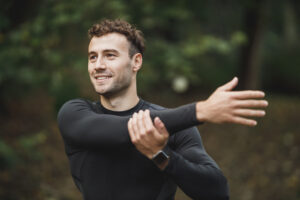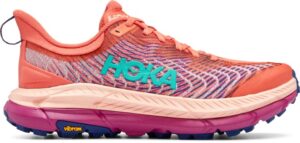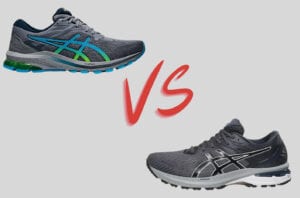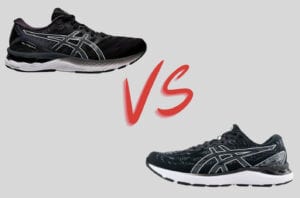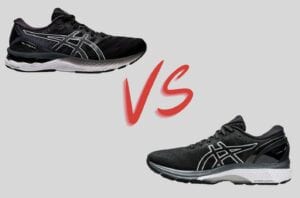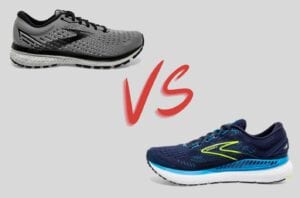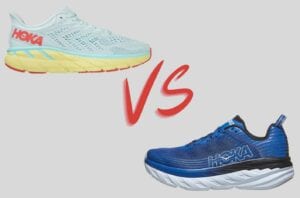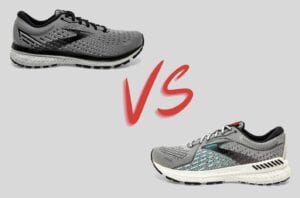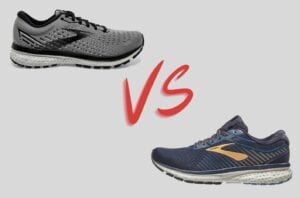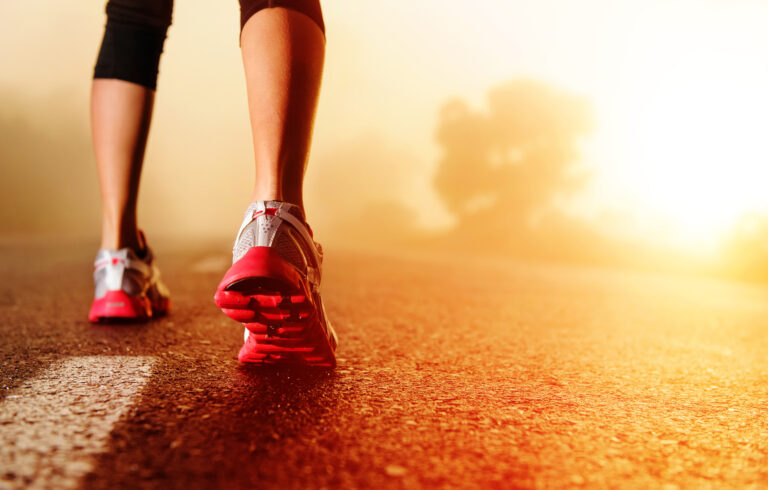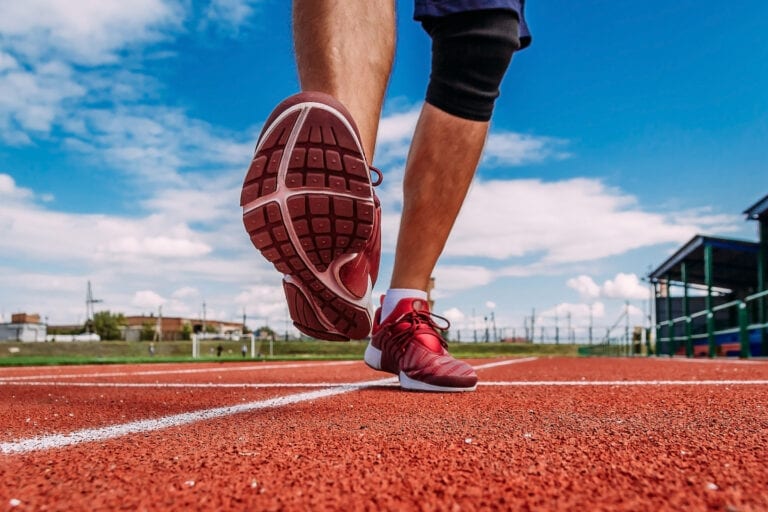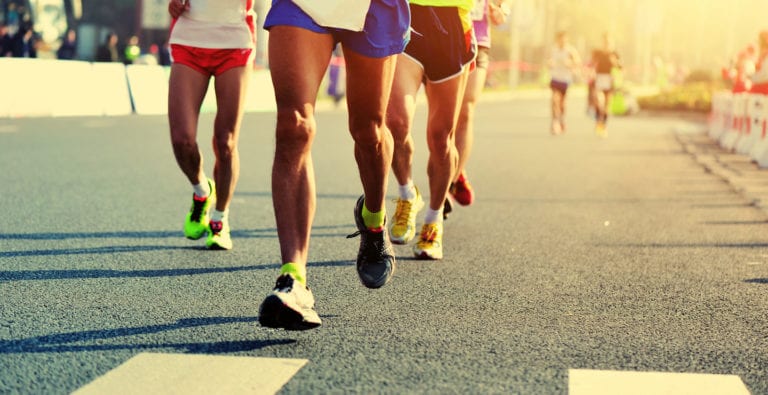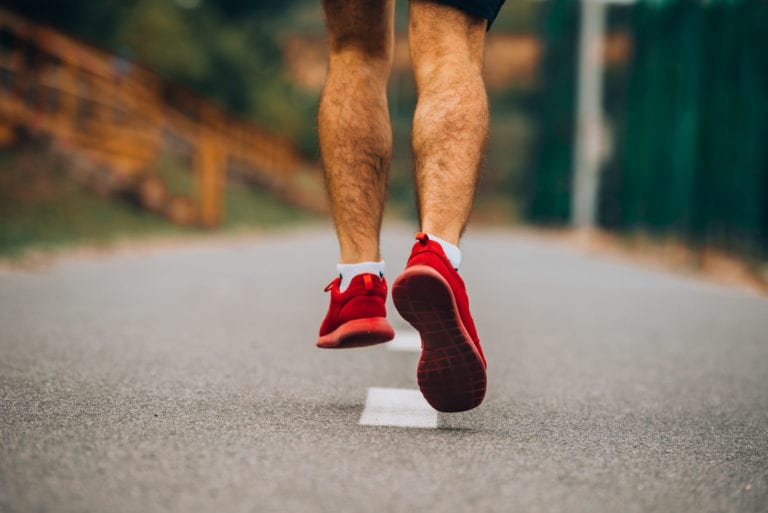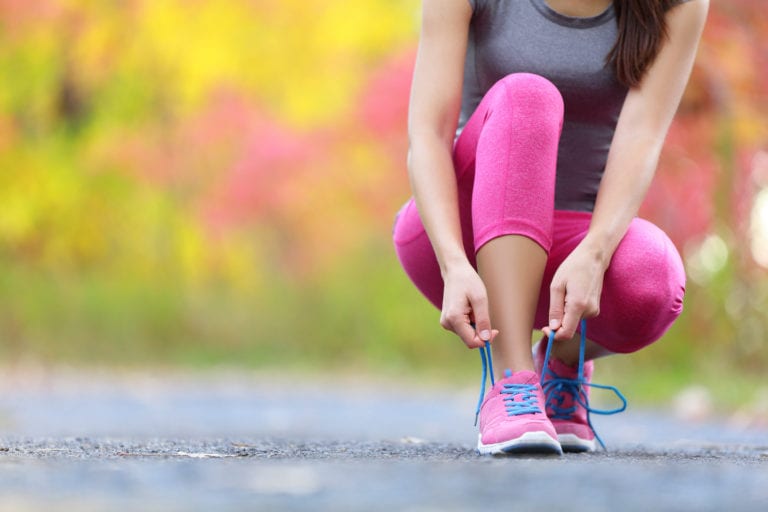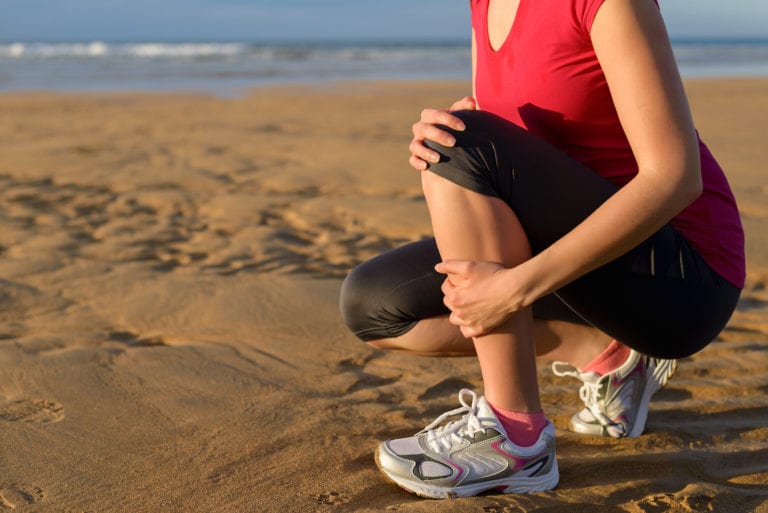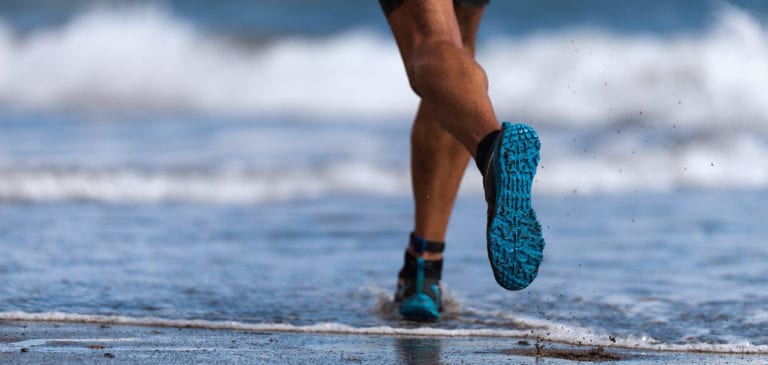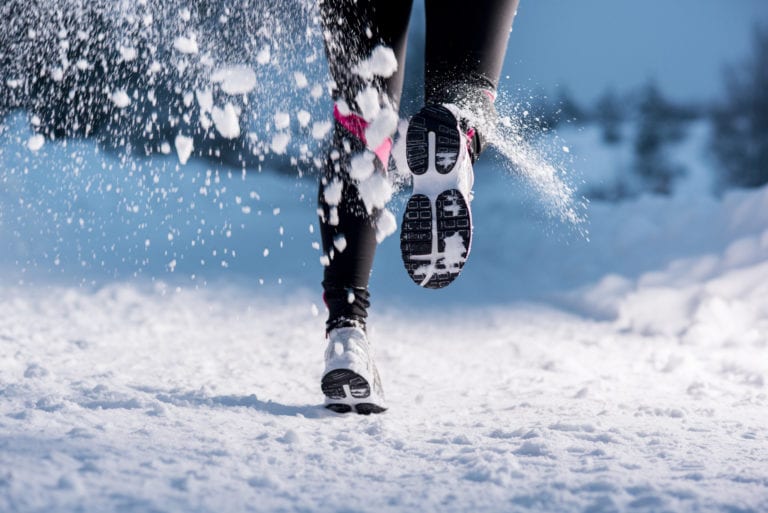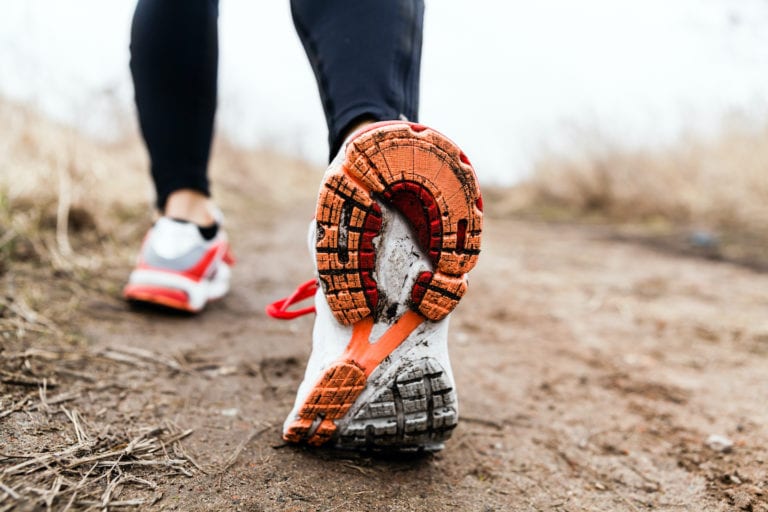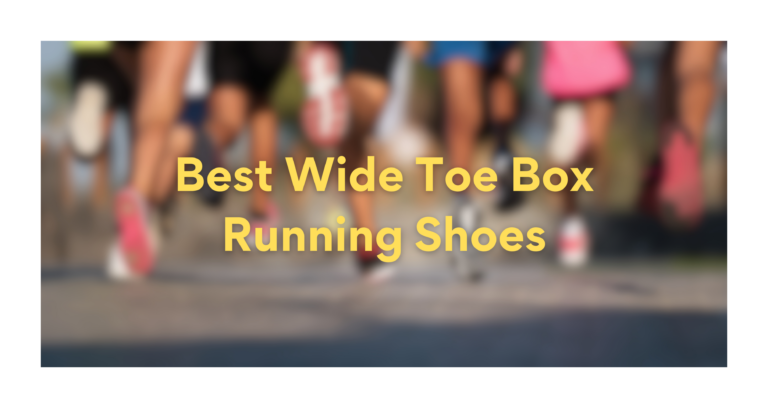Shoe size and fit for Running
Before you invest money into running shoes you need to know, how should running shoes fit? Finding shoes that fit well is the first step to a great run! So, what do you need to know before you buy your first pair? Here are some tips and tricks to guide you through the process.
How Should Running Shoes Fit?
Knowing What Size to Buy
Did you know that running shoes aren’t supposed to fit the same way your casual shoes do? When you run and your feet hit the ground, your toes move close to the end of the shoe.
Running shoes often need to be a half size to one size larger than your casual shoe to fit correctly. Wait! This doesn’t mean that you just need to order the next size up. Your feet can also change sizes during your lifetime.
So, the size you wore in high school, might not be the size you need now. That’s why it is a good idea to measure your feet. You can have your feet measured at a store, or you can measure them at home.
To measure your feet at home, start with the socks you normally wear. Put them on and stand up (this part is important!) If you aren’t putting your weight on your feet while you are measuring, you can end up with the wrong measurements.
Trace your foot on a piece of paper. Then, measure the length of your tracing. This is the length of your foot.
Next, measure across the widest part of your foot to get your foot width. Make sure you measure both feet. It’s not unusual to have one foot that is larger than the other.
Use the measurements from your larger foot to get the most comfortable shoe. It is better to have a shoe that is a little too big than one that is too small.
You can always lace your shoes tighter or wear thicker socks for your smaller foot. You can end up with blisters and problems if your shoe is too small. After you’ve measured, it’s time to determine your size.
Use a shoe measurement conversion chart to convert your foot measurements to shoe size. You can find a free one here.
Ordering Online or In-Store
So, you checked your email and found the Best trail running sneakers deal online. Should you order your running shoes online?
No two brands of shoes fit exactly the same way. In fact, sometimes sizes can vary between the different models of shoes from the same brand. This is why we recommend that you go to a brick and mortar store for your running shoes.
Nothing beats trying on shoes and walking around in them to see how they feel before you invest your money.
Proper shoe fit
Wear your running socks when you go shopping. Different socks can change the fit of the shoes. If you are wearing thicker socks, it may make your shoes fit tighter.
You want to make sure you wear the socks that you plan to run in. Pick several different brand and shoe options to try on. Don’t go shoe shopping in the morning.
Go shoe shopping later in the day or afternoon, when you’ve been on your feet for a while. Your feet swell throughout the day. Going later in the day will give you the best idea of how your shoes should fit.
If you don’t want to try on every shoe, here’s a neat tip: take the insert out of the shoe and stand on it. Then, ask yourself these questions:
- Does your foot fit?
- Is the insert too wide or too narrow?
- Does your heel hang over?
- Are your toes brushing the edge?

Pronation – What is it?
Pronation is the way your foot moves as it rolls inward and flattens out. This movement helps your body absorb shock when you are running.
Your foot pronation can help you to determine the best type of running shoe. There are two ways that you can check your pronation at home. The first way to determine your foot type is called a wet test. This test only requires a little bit of water and a flat surface.
First, dip your foot in water and shake off the excess. Then, place your foot down on a flat surface that will show your print.
You can use thick paper or cardboard. Now, consider your footprint. If you can see about half of your foot arch, you have normal or neutral pronation.
If you can’t see very much of your arch, you have under pronation. If your print shows almost your full foot, your feet show signs of overpronation.
The second way to determine your pronation is by considering the wear on some of your old shoes.
If the wear is focused on the outside edges of your shoes, your feet tend to roll outward. In this case, neutral shoes will probably work well for you. If the wear on your shoes is mostly on the balls of the shoes and the heels, your feet roll typically inward.
Neutral shoes are also good for you! If the shoe wear is concentrated on the inside edges of your shoes, your feet roll in too much. If your feet roll in too much, you may benefit from stability shoes.
These shoes are built to control how much your feet roll when you run. The right fit can prevent you from foot and knee injuries.

How Do You Know If You are Wearing the Wrong Shoe?
The wrong size running shoes can put you at risk for pain and injury. So, what are some signs that you are wearing the wrong size shoes? If you end up with muscle soreness and sore feet every time you run, you may be wearing the wrong shoes.
If your shoes are too small, your toes will repeatedly hit the front of the shoe. Your poor toes will end up bruised and sore.
The right shoes will give your toes room to flex and move forward with each stride. If your shoes are too narrow, this can cause painful blisters on your toes.
Your toes should not rub your shoes when you run. Another sign that your shoes are too small is if you have trouble taking them off. You should be able to easily slide your shoes off when they are untied, without having to loosen every lace.
Do you have pain or numbness in the top of your feet after you run? If your shoes are too tight, they can compress the blood flow to your feet causing a tingling sensation and pain.
If your shoes are too big, your heel may slip around while you are running. This can cause blisters and calluses on your heels. Shoes that are too big or too wide can also cause blisters on the bottom of your feet.
When your shoes are too big, your feet slide back and forth against the shoe and the sock, rubbing and putting unnecessary pressure and friction on your skin. Shoes that are too large can also cause pain in the balls of your feet.
A Few More Tips
Make sure you are wearing the right kind of shoes. Running shoes are designed to provide support when walking and running. On the other hand, walking shoes aren’t built to support running.
Don’t force your feet into shoes. If your feet don’t fit well into the shoes, they will cause you more harm than good—even if the shoes are a good price or a good brand! Don’t buy shoes that are too small or too tight to “break them in.”
Remember, your shoes should be comfortable when you buy them. The best way to prevent foot and ankle injury is to wear the right size shoe. A good fitting shoe will help ensure that you get the best runs yet!






